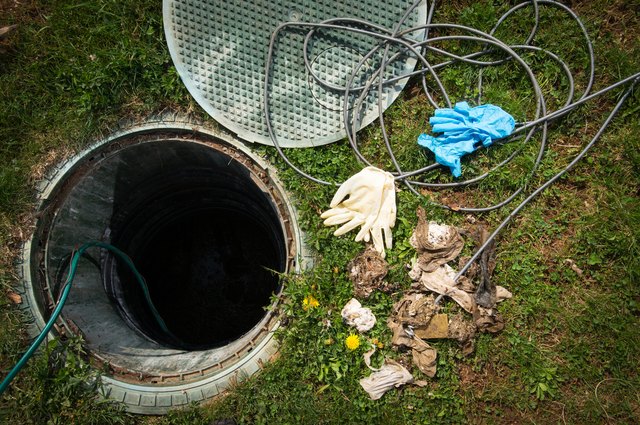Septic Tank Cleansing: Why You Must Do It And Just How Typically

Maintaining your septic tank in good condition is crucial to ensure that it's running smoothly. The tank must be maintained and pumped regularly, and any clogs should be removed. When your system for septic is malfunctioning it is crucial to fix it immediately. This will stop costly repairs from taking place.
The tank is being pumped
Having a septic tank pumped can save you from expensive repairs in the future. Pumping is a process that absorbs solids and waste. This lets the wastewater move through the system at a faster pace.
Septic tank pumping is a process that requires special equipment. A vacuum truck equipped with an extremely durable hose can take away the majority of garbage. The vacuum truck also removes most of the dirt.
Before a septic tank can be pumped then the tank's lid must be opened. View Details pumping technician will then pump one of the compartments. During the pumping process the operator of the muck rake is expected to stir up the tank to get rid of the sludge which has settled.
A septic tank should be cleaned every two to three years. The frequency of pumping a septic tank will depend on the amount of people living in the home and how much water is utilized. homes that host frequent guests, who use huge quantities in water, and put food in a garbage disposal may need to have their tanks cleaned more frequently.
The best way to clean a septic tank is to engage an expert. This is because chemical cleaners could harm the tank and create clogs.
When you hire an septic tank pumping service ensure that they're certified to provide this service. A licensed technician can tell you if you need to include enzymes or other additives. These additives could cost anywhere from $20 to $200.

Septic tanks are built to store water from the sink, bathroom, and shower. If there's an obstruction in the drain line the liquid could overflow into the groundwater table. This is a risk to the environment and can cause a smell to the home.
Disintegration of sludge and scum layers
During cleaning, the disintegration process of the sludge and scum layers takes place in a septic tank. The function of the septic tank is to reduce the velocity of wastewater by separating solids that are heavier and sink into at the base of the tank. The water then flows through the outlet of the tank and then flows into an empty drain field.
The sludge layer takes up around one-half-to-two-thirds of the total tank volume. They are distinguished by differences in density. The middle layer is composed of liquid and suspended solids, while the bottom layer is sludge. The sludge layer generally comprised of grease, fats, and oil.
The amount of sludge is reduced by anaerobic bacteria. Anaerobic bacteria are found in tanks that are not oxygen-free and consume organic matter that are present in the sludge. The bacteria emit gas as they break down the sludge. They also reduce the size of solids accumulated in the scum layer.
The rate of accumulation of sludge can be controlled by temperature and the COD concentration of the wastewater. A higher temperature can reduce the sludge accumulation rate as lower temperatures increase the rate. The sludge layer also contains insoluble compounds, created by anaerobic bacteria.
The efficiency of septic tank cleaning depends on the quantity of sludge which accumulates. A well-designed septic tank ought to be able to store sludge for at least five years. However the amount of solids that accumulate differs from case to case. The actual storage time is only determined through regular septic tank inspections.
It has been proven that the use of anaerobically digested waste sludge can boost the efficiency of a Septic tank. The sludge utilized in the tests was found to have PAN values of 27-42 %..
Drain field inspection
Conducting an inspection of the drain field isn't easy. There are many things to be aware of, including foul smells and grass that has grown over the drain and cesspools. All of these could be indicators of the septic system in need of maintenance.
It is recommended that the National Association of Certified Home Inspectors recommends performing an inspection at least once per year or every three years. An inspection will look at the system's flow pressure, age, and the history of maintenance.
A dye test can be another test that is performed as part of the examination. It measures what amount of dye in the water draining. The test also looks for backflow coming from the absorption area. If the dye is not of sufficient quality the dye could be of no value.
An inspection of the drain field is also necessary. A septic inspector will check for cesspoolsand mold and apparent puddles. In addition inspectors will search for indications of blockage.
If you own an septic system it is important to be aware of the components and their roles. If not, you might want to think about hiring a professional for the job.
Septic systems can fail due to a variety of reasons. A blocked or broken piping can cause a sinkhole or ponding. Additionally an absorption system can fail if it's a bit overloaded. A leaking tank is not uncommon.
The septic tank was designed to allow time for the wastewater to settle before it reaches the drain field. This is necessary to prevent scum buildup. This is achieved by using sanitary tees to keep solids from clogging up the drain field.
When the system for septic leaks, the effluent will contain nutrients that are needed for the growth of plants. However, a leaking leach field can lead to damages to the tank or distribution box or even the connection. It can also be costly to fix.
Clogs that must be cleaned
When you are cleaning your septic tank, it might encounter clogs that require to be removed. The first thing you need to determine is the root of the problem. You can do this by inspecting the sewer line from your house to the septic tank.
If you notice indentation marks on the ground or you have odd soggy patches in your yard It could be the right time to get the main sewer lines cleaned. The price to clean a 10-foot stretch of main sewer line ranges between $350 to $650.
You may also need to replace a section that is part of your main sewer line. A clog in the sewer line could cause other issues such as back-ups in the sewer. You can get rid of small clogs by boiling hot water in a pot. It can help break down the soap and grease build-up inside the pipe.
There is also chemical drain cleaners. However, they could cause more damage than good. Also, these chemicals may kill the good bacteria in the septic tank. Also, they can cost you more over the long term.
Another way to unblock drains is to use vinegar and baking soda mix. Both ingredients need to be slowly added to the drain, followed by an effective blast of hot water. This could suffice to get rid of smaller blockages.
If you have a clog that is too large to clear by yourself You may need to hire a plumber to clear it. This is particularly the case if you live in an older house. This is due to the fact that the sewer line is more susceptible to clog than a newer house.
If you have clogs in pipes, you can also use a drain snake. The tool comes with a long, stiff cable. The cable will help to push the blockage out of the pipe.
Maintenance of the septic system
If you have a house with a septic system or you are considering buying one, it is important to know how to maintain the system. It is essential to ensure the health of yourself as well as your family, and also for the environment.
A septic system is constructed to remove waste from your home which includes the sewage that you use when you bathe. The wastewater is then transported into a tank, and then to an leach field. The drain field is just as important as the tank. The soil that is in the drain field removes pollutants from water.
Septic systems have to be regularly pumped. Pumping frequency will depend on the size of the tank as well as the number of residents in the home. The Environmental Protection Agency estimates that tanks and leach fields is required to be pumped once every three to five years.
Alongside pumping, septic systems have maintenance. Failure to maintain them properly can result in rapid algae growth, which could harm groundwater in the area.
A septic system needs to be inspected every few years. This will avoid damage to the tank and leach field. It can also save you from expensive repairs.
If you notice a foul noise or smell coming from your septic system it could be a sign that something is wrong. This odor is often due to a lack of sealant water inside the toilets.
It is also worth asking an expert opinion on your system for septic. Getting a second opinion will help you save a significant amount of cost on repairs.
Septic systems are an investment that can be costly. If you plan on selling your home, you'll require it to be inspected. The inspection will help you determine the value of your property and determine the expense of future maintenance.
